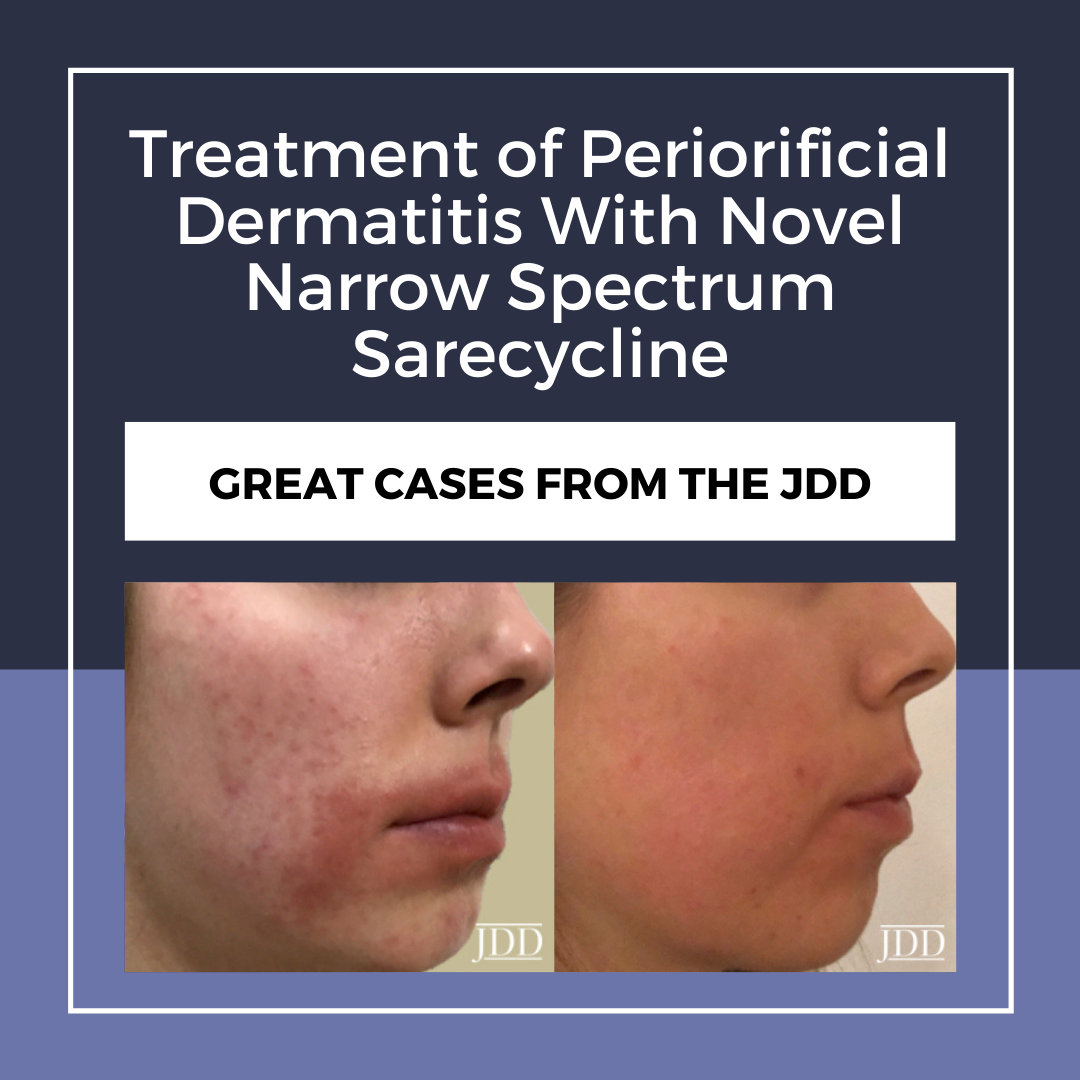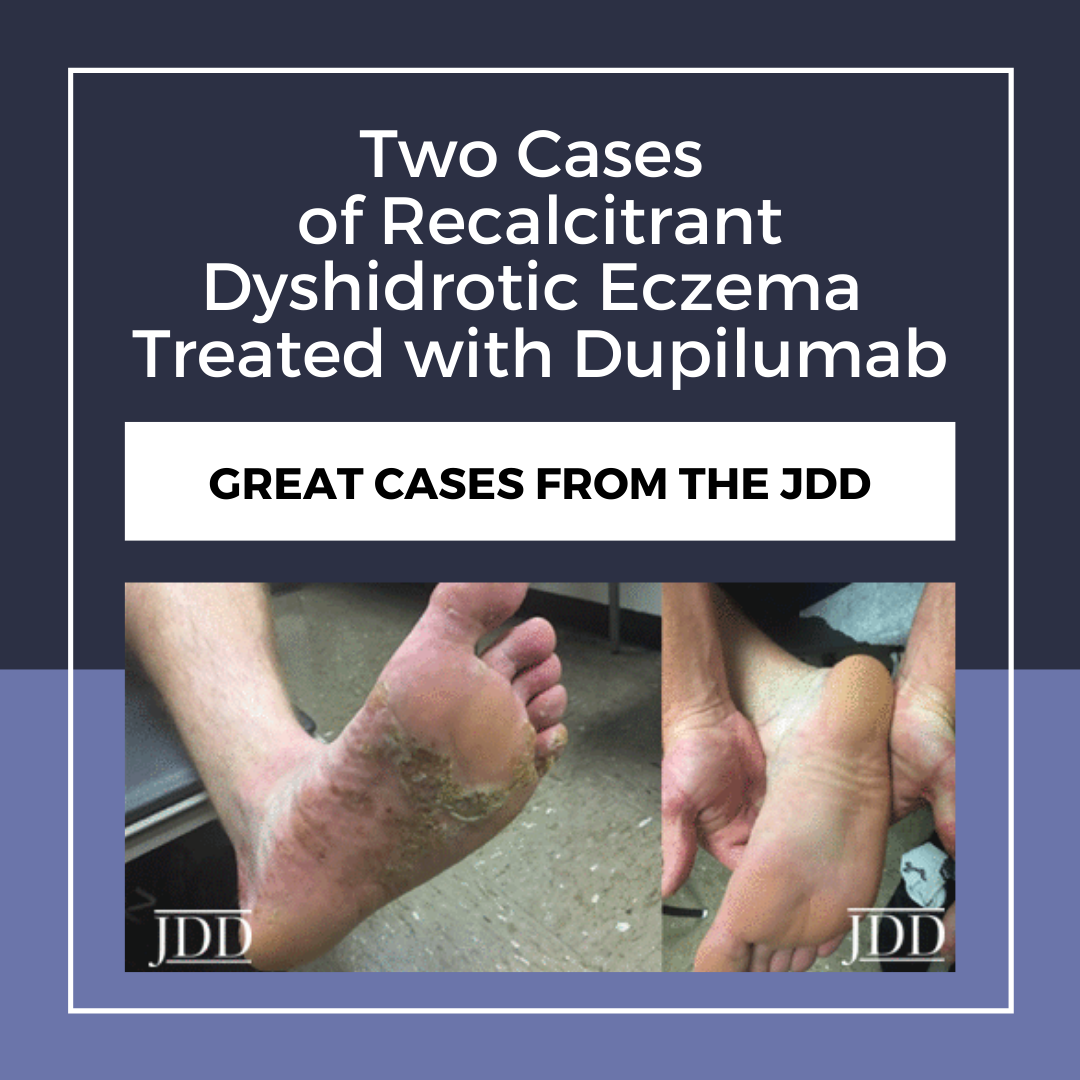Treatment of Periorificial Dermatitis With Novel Narrow Spectrum Sarecycline
 Broad spectrum tetracyclines are a well-known, widely used, and often successful treatment for use in inflammatory skin pathologies such as acne and rosacea. However, the steady rise of antibiotic resistance and gut dysbiosis associated with broad spectrum tetracyclines emphasizes the importance and responsibility of antibiotic stewardship. Narrow spectrum antibiotics have become increasingly impo …
Broad spectrum tetracyclines are a well-known, widely used, and often successful treatment for use in inflammatory skin pathologies such as acne and rosacea. However, the steady rise of antibiotic resistance and gut dysbiosis associated with broad spectrum tetracyclines emphasizes the importance and responsibility of antibiotic stewardship. Narrow spectrum antibiotics have become increasingly impo …
 Broad spectrum tetracyclines are a well-known, widely used, and often successful treatment for use in inflammatory skin pathologies such as acne and rosacea. However, the steady rise of antibiotic resistance and gut dysbiosis associated with broad spectrum tetracyclines emphasizes the importance and responsibility of antibiotic stewardship. Narrow spectrum antibiotics have become increasingly impo …
Broad spectrum tetracyclines are a well-known, widely used, and often successful treatment for use in inflammatory skin pathologies such as acne and rosacea. However, the steady rise of antibiotic resistance and gut dysbiosis associated with broad spectrum tetracyclines emphasizes the importance and responsibility of antibiotic stewardship. Narrow spectrum antibiotics have become increasingly impo … Continue reading "Treatment of Periorificial Dermatitis With Novel Narrow Spectrum Sarecycline"


 The May issue of the Journal of Drugs in Dermatology features dermatology articles on topics ranging from treatment updates on Port-Wine stain to the protective effect that liposomal bovine colostrum exerts on skin aging using telomere length as an aging biomarker. Straight from the JDD Editor’s desk, we share this month’s issue highlights:
Authors analyze extrusion forces of various produ …
The May issue of the Journal of Drugs in Dermatology features dermatology articles on topics ranging from treatment updates on Port-Wine stain to the protective effect that liposomal bovine colostrum exerts on skin aging using telomere length as an aging biomarker. Straight from the JDD Editor’s desk, we share this month’s issue highlights:
Authors analyze extrusion forces of various produ …  Case Scenario
A 26-year-old patient presents to the dermatology clinic with severe nodulocystic scarring acne. The patient identifies as a transgender male and notes that he has been receiving hormone replacement therapy for the past 4 years with weekly intramuscular testosterone injections. He has not had any gender-affirming surgeries and reports being currently amenorrhoeic. He is curren …
Case Scenario
A 26-year-old patient presents to the dermatology clinic with severe nodulocystic scarring acne. The patient identifies as a transgender male and notes that he has been receiving hormone replacement therapy for the past 4 years with weekly intramuscular testosterone injections. He has not had any gender-affirming surgeries and reports being currently amenorrhoeic. He is curren …  The following two cases presented by JDD authors Ryan A. Gall MD, John D. Peters MD, and Alyson J. Brinker MD add to the growing literature supporting the use of dupilumab in the treatment of patients with recalcitrant dyshidrotic eczema, both with and without diagnosed contact allergens.
Introduction
Dyshidrotic eczema, also known as dyshidrosis or pompholyx when involving larger bullae, is a c …
The following two cases presented by JDD authors Ryan A. Gall MD, John D. Peters MD, and Alyson J. Brinker MD add to the growing literature supporting the use of dupilumab in the treatment of patients with recalcitrant dyshidrotic eczema, both with and without diagnosed contact allergens.
Introduction
Dyshidrotic eczema, also known as dyshidrosis or pompholyx when involving larger bullae, is a c …  The April issue of the Journal of Drugs in Dermatology features the perfect mix of medical, aesthetic, and surgical dermatology articles on topics ranging from COVID-19 Vaccines and Soft Tissue Filler Reactions to Biologic Therapy for Psoriasis. Straight from the JDD Editor’s desk, we share this month’s issue highlights:
A survey was designed to capture the incidence of adverse events in G …
The April issue of the Journal of Drugs in Dermatology features the perfect mix of medical, aesthetic, and surgical dermatology articles on topics ranging from COVID-19 Vaccines and Soft Tissue Filler Reactions to Biologic Therapy for Psoriasis. Straight from the JDD Editor’s desk, we share this month’s issue highlights:
A survey was designed to capture the incidence of adverse events in G …